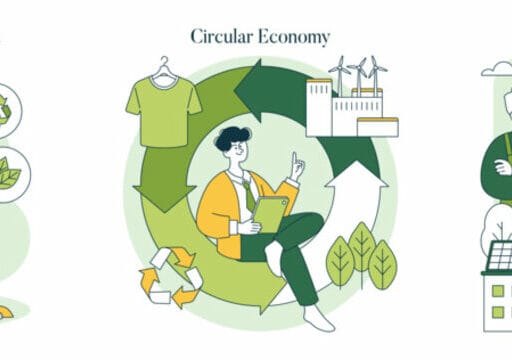Sustainability has become an important factor for both corporations and society. It’s not only about being environmentally conscious; it’s also about developing systems that will last. The notion of sustainability is founded on 3 pillars: environmental, social, and economic sustainability. These pillars are interrelated, and when combined, they form a complete framework for attaining sustainable development. This blog will look at each pillar, outlining their significance, advantages, and how organizations might incorporate them into their operations.
Introduction to the 3 Pillars of Sustainability
Understanding the 3 pillars of sustainability is critical for anybody seeking to have a long-term beneficial effect. The 3 pillars of sustainability include environmental, social, and economic factors. Each pillar reflects a separate component of sustainability that, when united, improves the overall health and lifespan of ecosystems and human communities. In this book, we will go over each pillar in detail, offering a comprehensive knowledge of what they contain and how they interact.
Environmental Sustainability
Environmental sustainability is the most well known of the 3 pillars of sustainability. It prioritizes the conservation and protection of natural resources and ecosystems. This pillar highlights the need to reduce waste, reduce pollution, save energy, and safeguard biodiversity. Businesses that employ ecologically friendly practices can lower their ecological impact and help to preserve the world for future generations.
Key Aspects of Environmental Sustainability:
1- Resource efficiency: This is refer to the efficient use of resources such as energy, water, and raw materials in order to reduce waste and the environmental effect.
2- Pollution Reduction: Taking steps to minimize emissions and waste, consequently reducing pollution of the air, water, and soil.
3- Biodiversity protection: It is preserving natural habitats and ecosystems in order to conserve biodiversity and prevent species extinction.
4- Renewable Energy: Switching to renewable energy sources including solar, wind, and hydro to lessen dependency on fossil fuels.

Social Sustainability
Social sustainability, another critical component of the three pillars of sustainability, is concerned with sustaining and increasing the well-being of individuals and communities. This pillar addresses topics including social justice, human rights, labor rights, and community development. Socially sustainable methods guarantee that all stakeholders, including workers, customers, and communities, are treated fairly and given chances for advancement and development.
Key Aspects of Social Sustainability:
1- Equity and Inclusion: Encouraging equal treatment, diversity, and inclusion in the workplace and society.
2- Community Engagement: This entails cultivating close relationships with local communities and contributing to their growth through projects like as education, healthcare, and infrastructure.
3- Human Rights: Ensuring that corporate activities respect and protect human rights, such as fair labor standards and safe working conditions.
4- Employee well-being: This is entails creating a healthy work environment that promotes employee health, safety, and professional growth.

Economic Sustainability
Economic sustainability is the third of 3 pillars of sustainability. It entails developing systems that promote long-term economic growth without jeopardizing social and environmental well-being. This pillar focuses on long-term economic policies that promote profitability and stability while simultaneously addressing social and environmental problems. Economic sustainability entails generating value for all stakeholders, including shareholders, employees, consumers, and communities.
Key Aspects of Economic Sustainability:
1- Profitability and Growth: Ensuring that firms maintain profitability while adopting sustainable practices.
2- Innovation and Efficiency: Encouraging innovation and increasing operational efficiency can help to minimize expenses and environmental impact.
3- Resilient Economies: Creating economies that can endure and adapt to change, such as economic downturns and environmental issues.
4- Ethical Practices: Conducting business in an ethical and transparent manner to establish stakeholder confidence and ensure long-term success.

Integrating the 3 Pillars of Sustainability
Integrating the 3 pillars of sustainability into corporate processes is critical for long-term success and making a positive difference. Companies that embrace sustainability can profit from a better reputation, more devoted customers, and higher operational efficiency. Here are some practical strategies to incorporate the 3 pillars of sustainability into company operations:
⭐ Create a Sustainability plan: Develop a comprehensive plan for achieving environmental, social, and economic objectives. This plan should include explicit objectives, targets, and activities to achieve sustainability.
⭐ Engage Stakeholders: Include workers, customers, suppliers, and communities in the sustainability process. Seek their involvement and feedback to ensure that sustainability activities are both inclusive and successful.
⭐ Measure and report progress: Set up processes for assessing and reporting sustainability performance. Use key performance indicators (KPIs) to monitor progress and pinpoint areas for improvement.
⭐ Foster a Culture of Sustainability: Create a culture of sustainability inside the business by educating personnel, supporting sustainable behaviors, and rewarding accomplishments.
Benefits of Embracing the 3 Pillars of Sustainability
Adopting the 3 pillars of sustainability may provide significant benefits to organizations. Companies that prioritize sustainability may improve their reputation, attract and keep consumers, and increase financial performance. Here are some important advantages of adopting these:
Enhanced Reputation: Customers, investors, and the general public frequently reward companies that promote sustainability. This excellent reputation can boost brand loyalty and market share.
Cost Savings: Implementing sustainable practices like energy efficiency and waste reduction may result in considerable cost savings and increased operational efficiency.
Risk Mitigation: Addressing environmental and social risks allows businesses to decrease their exposure to potential legal, regulatory, and reputational concerns.
Employee Engagement: Working for a firm that prioritizes sustainability and social responsibility increases employees’ engagement and motivation.
Long-term development: Sustainable firms are better positioned for long-term development and success, since they can adapt to changing market conditions and stakeholder expectations.
Case Studies of Successful Implementation
To demonstrate the influence of the 3 pillars of sustainability, consider these case studies of businesses that have successfully integrated sustainability into their operations:
IKEA: This worldwide furniture company has achieved great environmental progress by concentrating on renewable energy and sustainable sourcing. IKEA intends to be climate positive by 2030, utilizing 100% renewable energy and getting all of its wood from sustainable forests.
Ben & Jerry’s: Ben & Jerry’s is well-known for its dedication to social sustainability. The company actively promotes fair trade, campaigns for social justice, and invests in community development programs. The corporation promotes fair labor policies across its supply chain and participates in a variety of social action initiatives.
Google: This symbolizes economic sustainability through its innovative use of technology and efficiency. The corporation has committed to using 100% renewable energy to power its data centers and offices. Google’s advances in AI and machine learning are also intended to optimize energy use and increase overall efficiency.
These case studies show how varied organizations from various industries effectively integrate the 3 pillars of sustainability into their operations, therefore providing a standard for others to follow. These firms are paving the path for a more sustainable future by putting environmental, social, and economic sustainability first.
Practical Tips for Companies under 3 Pillars of Sustainability
- Conduct a full sustainability audit to discover areas in which your organization can enhance its environmental, social, and economic impact.
- Engage with stakeholders, including workers, customers, and suppliers, to understand their expectations and get important insights.
- Create specific sustainability goals and include them into your business plan, ensuring they are consistent with your company’s vision and values.
- Invest in training and education to promote awareness and develop sustainability skills in your team.
- Utilize technology by employing solutions like IoT for real-time data collecting and blockchain for transparent supply chain tracking.
- Collaborate with other businesses through industry associations and non-profits to exchange best practices and encourage collective action.
Fherist’s Role in Promoting Sustainability
Fherist is a platform that helps businesses reach their sustainability goals. Fherist helps firms incorporate the 3 pillars of sustainability into their operations by providing a variety of services such as sustainability evaluations, reporting, and certification. Fherist’s business directory, marketplace, and network connect businesses to sustainability experts, goods, and services, establishing a collaborative ecosystem for sustainable growth.
Conclusion of 3 Pillars of Sustainability
The 3 pillars of sustainability—environmental, social, and economic—form a complete framework for attaining sustainable development. Businesses that embrace these pillars may add long-term value to all stakeholders, improve their reputation, and assure long-term success. As we progress toward a more sustainable future, corporations must emphasize sustainability and incorporate it into their basic operations. With the help of platforms like Fherist, businesses can negotiate the difficulties of sustainability and have a beneficial influence on the globe.
FAQs about 3 Pillars of Sustainability
🤔 What are the 3 pillars of sustainability?
Answer: There are 3 pillars of sustainability: environmental, social, and economic sustainability. They offer a holistic strategy to achieving sustainable development that balances ecological protection, social well-being, and economic progress.
🤔 Why are the 3 pillars of sustainability important?
Answer: The 3 pillars of sustainability are important because they address the interconnectedness of our environment, society, and economy. Businesses and society may establish long-term robust, egalitarian, and viable systems by taking all 3 factors into account.
🤔 How can businesses implement the 3 pillars of sustainability?
Answer: Businesses may execute the 3 pillars of sustainability by creating a sustainability plan, involving stakeholders, monitoring and reporting progress, and cultivating a sustainable culture. Practical measures include resource efficiency, fair labor policies, and ethical corporate practices.
🤔 What are some examples of the 3 pillars of sustainability in action?
Answer: Examples of the 3 pillars of sustainability in action include Patagonia’s environmental activities, Unilever’s social sustainability efforts, and Tesla’s economic sustainability via innovation. These businesses exemplify how sustainability may lead to success.
🤔 How does Fherist support the 3 pillars of sustainability?
Answer: Fherist helps organizations meet the 3 pillars of sustainability by offering tools and resources for sustainability evaluations, reporting, and certification. The Fherist platform connects businesses with sustainability experts, goods, and services, encouraging collaboration for sustainable growth.








